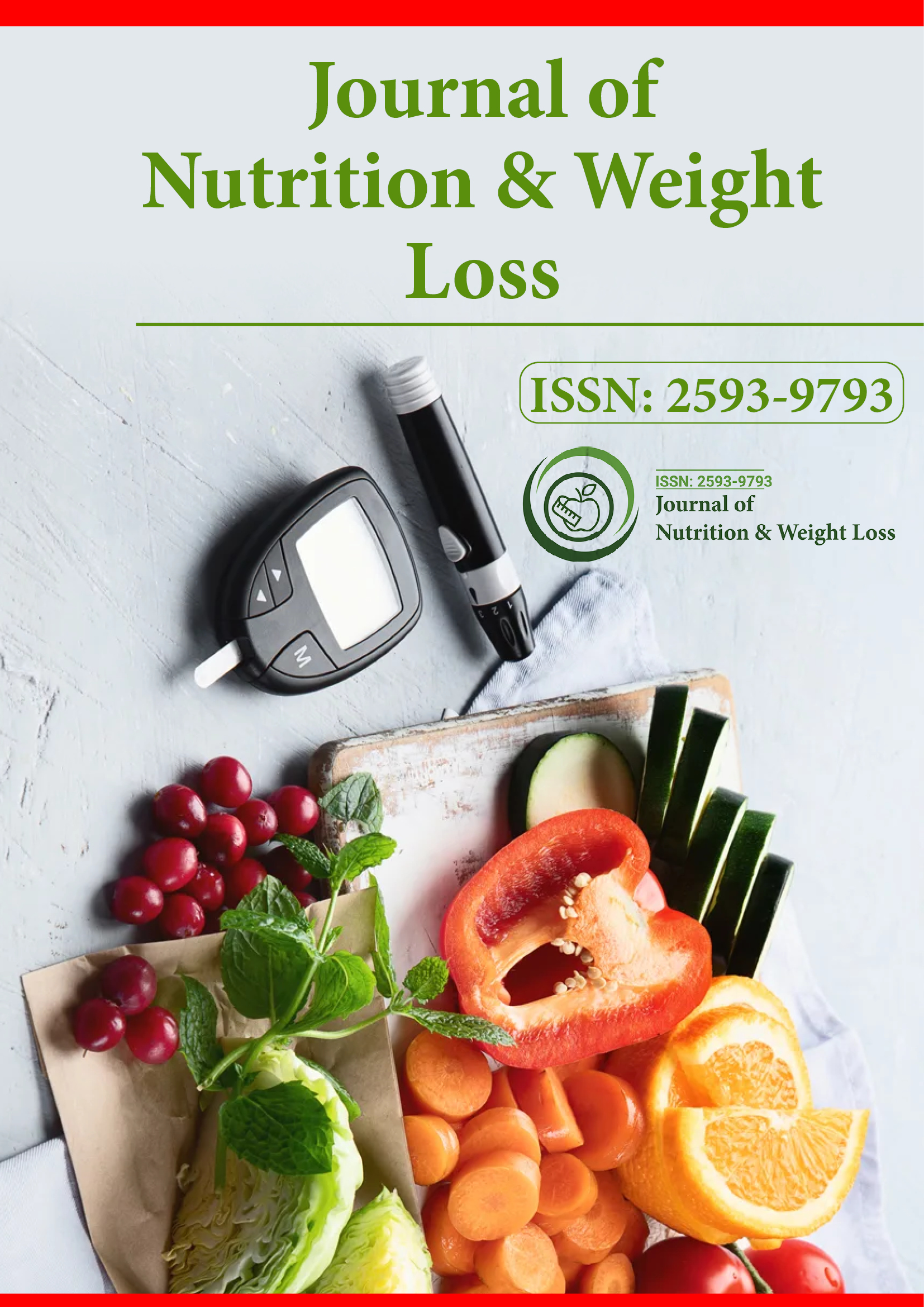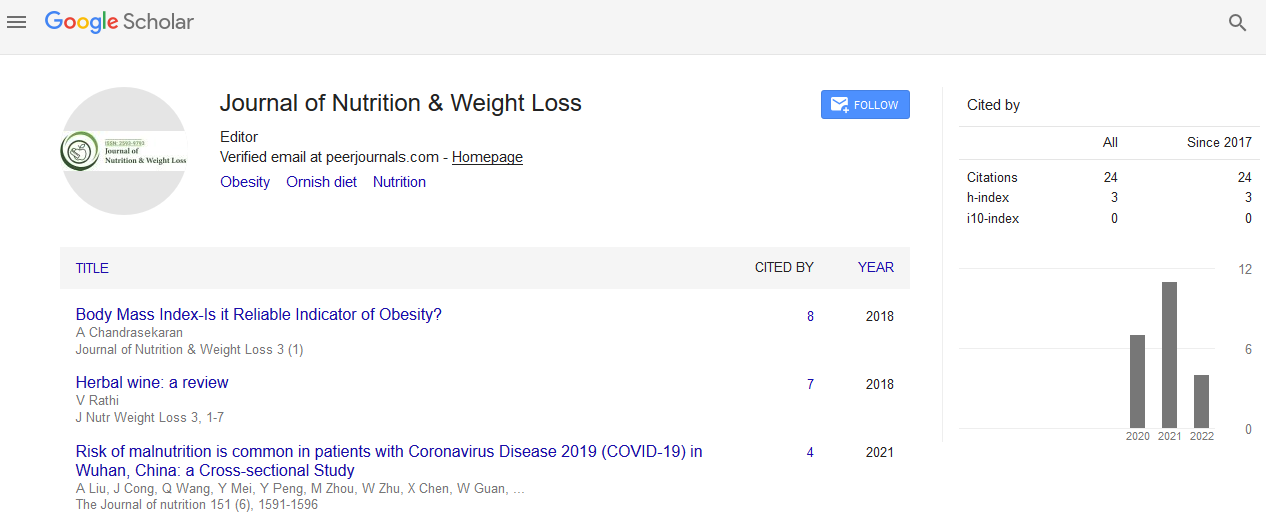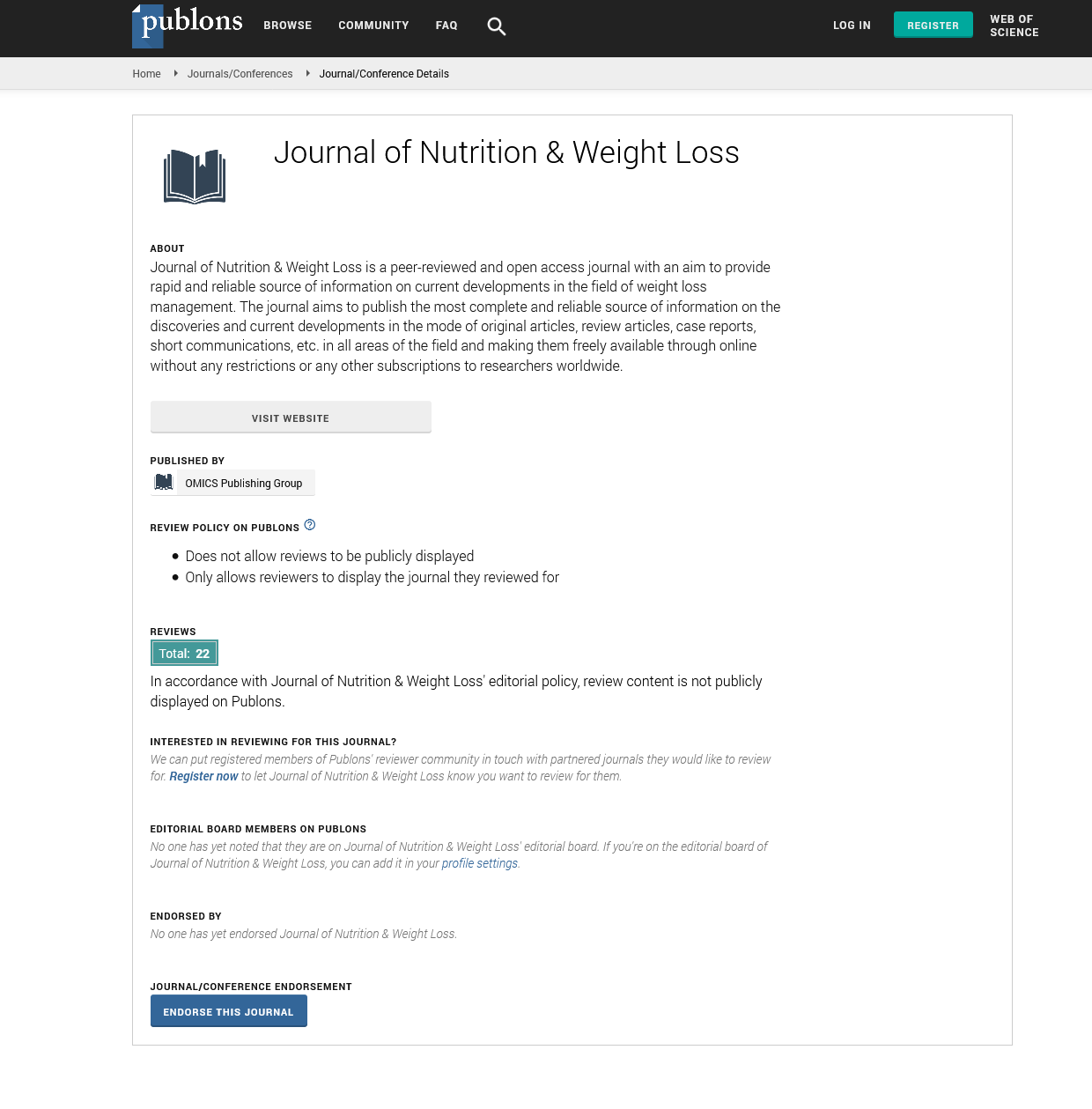Indexed In
- RefSeek
- Hamdard University
- EBSCO A-Z
- Publons
- Euro Pub
- Google Scholar
Useful Links
Share This Page
Journal Flyer

Open Access Journals
- Agri and Aquaculture
- Biochemistry
- Bioinformatics & Systems Biology
- Business & Management
- Chemistry
- Clinical Sciences
- Engineering
- Food & Nutrition
- General Science
- Genetics & Molecular Biology
- Immunology & Microbiology
- Medical Sciences
- Neuroscience & Psychology
- Nursing & Health Care
- Pharmaceutical Sciences
Commentary - (2023) Volume 8, Issue 2
Caloric Deficit and Sensible Diet: A Commentary
Sebastian Moore*Received: 15-May-2023, Manuscript No. JNWL-23-22277; Editor assigned: 17-May-2023, Pre QC No. JNWL-23-22277 (PQ); Reviewed: 31-May-2023, QC No. JNWL-23-22277; Revised: 07-Jun-2023, Manuscript No. JNWL-23-22277 (R); Published: 14-Jun-2023, DOI: 10.35248/2593-9793.23.8.166
Description
The principle of a caloric deficit, often a primary focus in discussions of weight loss and overall health, is characterized by consuming fewer calories than the body burns. This state can be achieved by reducing calorie intake, increasing physical activity, or a combination of both. In this condition, the body is forced to use its stored energy reserves, whether from fat or muscle, to perform its essential functions, leading to weight loss. However, adopting a healthy and comprehensive approach to a caloric deficit is important, ensuring the body receives the necessary nutrients for optimal functioning. Key to achieving a healthy caloric deficit is a balanced diet, which involves consuming a variety of foods from all food groups in the right proportions. This includes fruits, vegetables, whole grains, lean proteins, and healthy fats, all of which provide the essential nutrients the body needs to function properly, such as vitamins, minerals, dietary fiber, and antioxidants.
While a caloric deficit is necessary for weight loss, it’s important to maintain a balanced diet and avoid an excessively large deficit. A drastic caloric deficit can lead to nutrient deficiencies, loss of muscle mass, and other health problems. It can also be unsustainable in the long term, leading to cycles of weight loss and gain. Therefore, it’s recommended to aim for a moderate caloric deficit that allows for steady, gradual weight loss. Physical activity plays a significant role in creating a caloric deficit. Exercise not only burns calories but also helps to preserve muscle mass during weight loss. It also has numerous other health benefits, including improving cardiovascular health, boosting mood, and reducing the risk of chronic diseases. However, it’s important to note that not all calories are created equal. The quality of the calories what we consume matters. Foods that are high in added sugars and unhealthy fats can lead to weight gain and health problems, even if we are in a caloric deficit. On the other hand, nutrient-dense foods like fruits, vegetables, whole grains, and lean proteins can promote weight loss and improve health.
The types of food consumed play a vital role in maintaining a caloric deficit without compromising nutrient intake. It is important to consume the recommended 0.8 grams per kg of proteins per day. Proteins not only help in maintaining satiety but also support muscle growth and repair, which can be particularly beneficial when in a caloric deficit and engaging in regular exercise. Choosing nutrient-dense foods that are low in calories but high in vitamins, minerals, and fiber is a good strategy. These foods can help in maintaining a feeling of fullness and satisfaction, making it easier to adhere to a diet and maintain a caloric deficit.
In conclusion, a caloric deficit is a key component of weight loss. However, it’s important to approach it in a healthy and balanced way. This involves consuming a nutrient-dense, balanced diet, engaging in regular physical activity, and ensuring that the caloric deficit is moderate and sustainable. By doing so, we can achieve weight loss while also promoting overall health and well-being.
Citation: Moore S (2023) Caloric Deficit and Sensible Diet: A Commentary. J Nutr Weight Loss. 8:166.
Copyright: © 2023 Moore S. This is an open-access article distributed under the terms of the Creative Commons Attribution License, which permits unrestricted use, distribution, and reproduction in any medium, provided the original author and source are credited.


